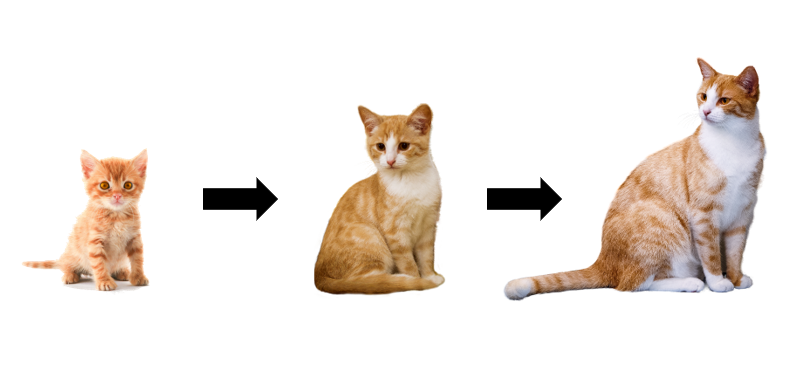Just like human beings, kittens also reach a point in age, after which a person can consider it to be an adult cat. There is no specific age after which a cat reaches adulthood. However, much like humans, feline animals go through certain milestones and cycles, which indicates that it is slowly reaching adulthood.
There is also the fact that although cats may reach adulthood after a point in time, they may not be fully grown. Many factors may affect the age at which a cat attains its full growth potential. Before getting into the details, one needs to know why the cat’s growth and adulthood are important.
Why is it necessary to know whether a cat is fully grown or not?
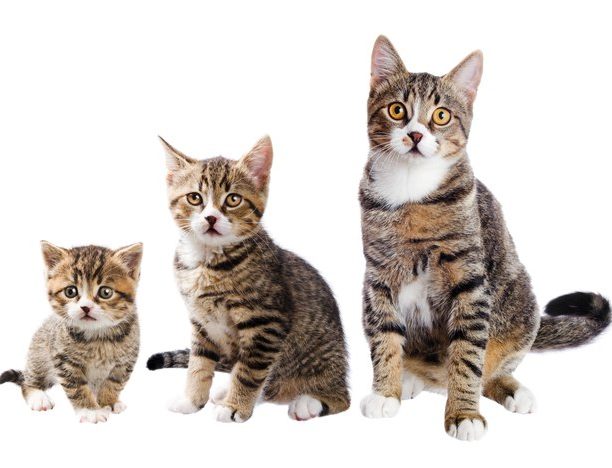
There are specific changes that a cat owner will need to do at different life stages of a cat. For example, the cat owner should not feed adult cat food to kittens and kitten food to adult cats. With fully grown adult cats, some bad habits that they have not outgrown may need the attention of an expert or a vet. On the other hand, kittens and young cats may only need regular behavior control by the owner to get rid of such undesirable habits. Taking care of a cat depends on where it is at its life stage.
At what age is a cat fully grown?
Although there is no black and white answer to this question, there is a general range at which most cats reach their full growth potential. This age is from 9 months to 12 months of age for most cats. It may vary from breed to breed like for larger cat breeds. They enter their full-grown stage only after 2 to 4 years.
Many cats continue to grow even after reaching a full year. However, this rate of growth slows down dramatically after one year of age. A kitten can grow up to eight times its original size in just a span of eight short months.
How to know if a cat is fully grown?
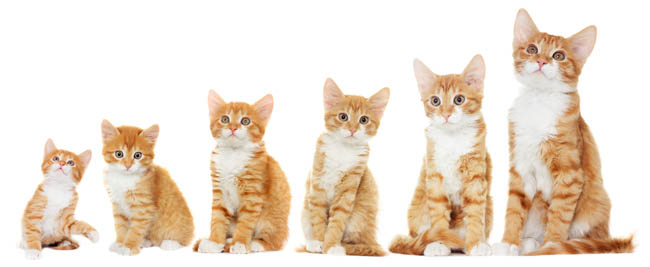
Cats usually reach their full-grown size in nine to twelve months, but this is not the exact age for all cats. To get a better idea of whether a cat is going to grow anymore, it is best to be aware of the different life stages of a cat:
Kitten (zero months to six months)
At this age, a kitten will have a very rapid growth rate. The kitten’s learning abilities are also very high at this age, and they like to explore. They can quickly develop skills by observing how their mothers or other cats behave.
Junior (six months to 2 years)
When a cat reaches six months of age, they reach maturity or adulthood. Some cats may keep growing throughout their junior cat stage. This age is when the cat abandons the kitten-like behavior and settles into its real nature.
Prime stage
At the prime cat stage, a cat reaches its best, peak stage of physical fitness. Although they may be in their prime, cat owners should take it to a vet for regular checkups. These vet trips will prevent unexpected illnesses and problems.
Mature cat
As a cat reaches its mature stage, they become inactive and more prone to gaining weight. Cat owners should keep an eye on their mature cat’s exercise and diet to avoid any problems related to obesity and being overweight.
Senior cat
After entering the senior cat stage, a cat will start to show signs of lethargy and become more prone to sicknesses. A cat enters the senior stage at eleven to fifteen years. After this, people consider a cat as geriatric.
There is only one sure way to find out if a cat has stopped growing, and that is measuring its weight and height every month. Even if the cat does not seem to grow anymore, it may be gaining a little bit of weight or increasing in size.
Factors that can affect the growth of a cat
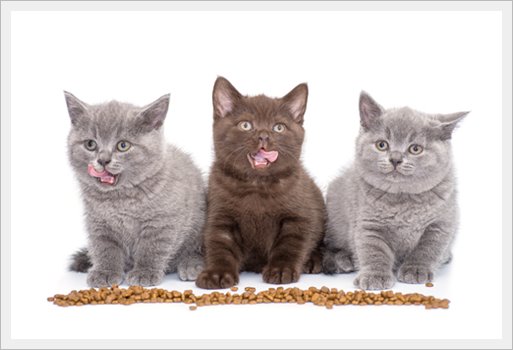
Sometimes a cat may achieve its full-growth stage before or after the time range set above. Here are some factors that may affect the growth of a cat:
The breed of the cat
This point is a given. If the cat belongs to a large cat breed, like the Maine Coon, Savannah, or Chausie, it is likely to take more time than the average to reach its full-grown size. On the other hand, cats like the Dwelf and the Skookum are tiny and will not take long at all to reach their adult size.
Nutrition during the early stages
A proper diet and nutrition are absolutely crucial for a cat to reach its full size. If a kitten owner fails to feed or provide a nutritious diet properly, the kitten will not grow into the size that it is supposed to. Regardless of how big the cat breed is, nutrition is of the utmost importance when it comes to the cat’s growth.
Spaying or neutering
If cat owners spay or neuter their cats, these cats are most likely to be on the slender and more trim side. Although many believe that spaying or neutering a cat may lead to obesity and overweight problems, this belief is incorrect.
What are the differences in diet between a kitten and a full-grown cat?
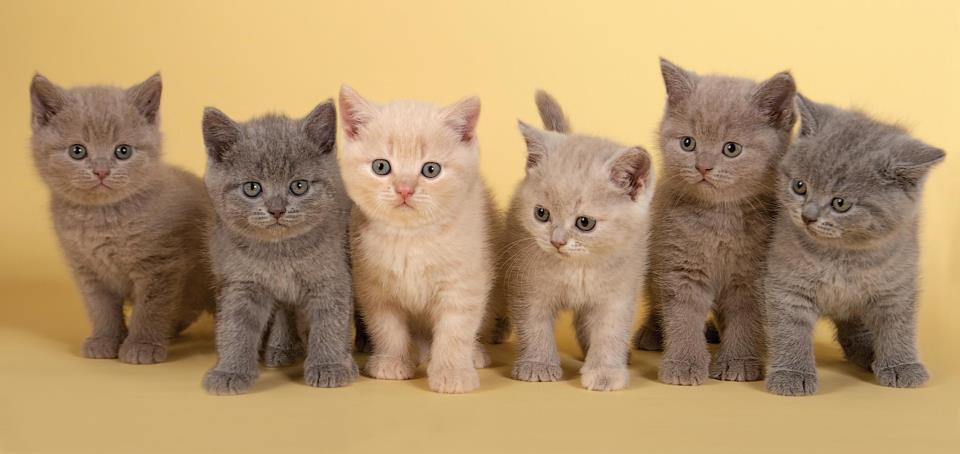
The nutritional needs of a kitten and a cat are very different, and feeding them the same food may stunt their growth or lead to obesity. Here are the dietary needs of cats and kittens:
Nutritional needs of a kitten
Kittens need a lot of protein for proper growth and physical development. It is at this age that kittens can grow up to six or seven times their original size. If the kitten owner does not feed it enough proteins, this failure will stunt its growth. The reversal of stunted growth is impossible.
Feeding a kitten in moderate quantities throughout the day instead of the same timing as an adult cat will help in keeping up with their fast metabolism. However, keep this feeding schedule in check at all times. Overfeeding will lead to early obesity, which is very dangerous for all feline animals at any point in age. Feeding a kitten three times a day is highly recommended. After reaching adulthood, feeding it just twice a day will do.
Feeding your kitten adult cat food may stunt its growth. Usually, a kitten will need to feed on kitten food for at least six months, and this period may extend to 12 months. However, for some cat breeds like Maine Coons, a young cat may need kitten food for another year or so, to keep its weight.
Nutritional needs of a junior cat (fully grown cat od six months to 2 years)
A junior cat can eat adult cat food. Adult cat foods come in the form of kibble or wet canned food, and the choice between the two types depends on the cat owner’s preference. There will need to be a slight increase in calory intake for junior cats. However, if a cat likes to laze around during the day, an increase in calory intake may lead to obesity.
To get an idea of how many calories a cat needs, cat owners will need to get the advice and opinion of a vet. Junior cats also need fats and proteins to stay fit. Always add some of these in its meals after considering its allergies, requirements, stomach sensitivity problems, and the like.
Feeding a junior cat twice a day is enough to keep it fed and satisfied. Free feeding a cat is also acceptable, but cat owners will need to keep a close eye on their cat’s food intake. Overeating is not a good situation and will have several adverse effects on a cat’s health.
What can stop a cat from growing fully (stunted growth)?

Several factors may cause a cat to live through stunted growth. Some of these factors are:
Innutritious diet
It is a frequent observation that stray cats and cats in shelters are smaller in size than those that people bring up from homes. This fact is because stray cats and shelter cats do not get a nutritious diet during their kitten stage. A proper diet is necessary for the growth of a kitten.
Dwarfism
Sometimes, even large cat breeds do not grow as big as the average. Dwarfism within a cat’s DNA may cause this problem. Cats with dwarfism have some additional health problems which cat owners need to track.
Injuries
Kittens who got injured when they were young may face some growth problems in the future. These injuries may have long-term consequences besides stunted growth.
Conclusion
A cat may reach its full-grown size in six to twelve months on average. However, certain factors and exceptions may reduce or increase this range. Large cat breeds usually take more than a year to reach their full physical size potential. On the other hand, a nutritious diet also plays a vital role in helping a kitten to get fully grown.
